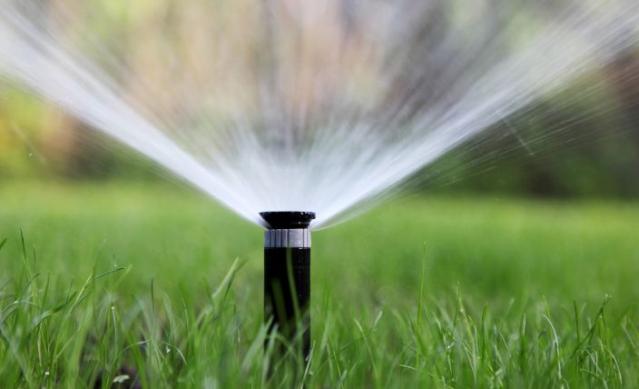Watering a hydroseeded lawn
Watering requirements for establishing a hydroseed lawn
So you have recently had your new lawn hydroseeded, but it doesn’t seem to be living up to the hype…it just isn’t growing! It’s already been 3 days and you have watered it twice and nothing! Not a single shoot!
Before you ring up the contractor and give him an earful, read this article.
It is very important to understand the watering demands of your newly established hydroseed lawn in order to achieve maximum success. The water demands are very delicate, and the seeds need the precise balance of moisture and warmth to germinate.
Damp not drought or drown
Getting the balance between sufficient moisture and ground temperature right can be a tricky one. Too much water; the ground temperature drops and the seeds won’t germinate, too little water and the seeds dry out and won’t germinate.
Sounds like a hiding to nothing? Not true. Establishing a healthy lawn from hydroseed isn’t that difficult…if you follow these instructions and show a little patience.
As we have mentioned in the previous blog post, seed takes between 7-14 days to germinate depending on the time of year and the type of irrigation being used. Assuming that we are in the growing season (Sept-April), let’s take a look at what correct irrigation should look like for a hydroseed lawn.
The first goal is germination. In order to allow the seeds to germinate, we want to apply frequent irrigation applications that don’t last too long. This will keep the soil moist without lowering the temperature of the soil. Strictly speaking not much grows under 5 degrees Celsius, so the aim is to keep the soil above that temperature. Generally, in Spring-Summer this isn’t a problem and you do not need to invest in a soil thermometer. However, overwatering can lower the temperature enough to stunt the germination and growth.
Underwatering on the other hand results in a moisture deficit in the soil. This can be aggravated in extreme conditions like the Nor-westers experienced in Canterbury. On these days the moisture deficit becomes a real challenge and can spell death for young seedlings. At times like this over-watering is not much of a concern and it is recommended to apply as much irrigation as possible without causing run-off or ponding.
The ideal irrigation schedule for a new hydroseed lawn would be 3-5 applications per day at 5-15 minutes depending on the size and location of your lawn.
Manual or automated
The size of the lawn you are establishing and the location of the lawn will determine to a lesser or greater degree what type of irrigation system you need to run. Obviously, it is impossible to manually irrigate a new sports field as there are not enough hours in the day to do this. But, if you are establishing a small residential lawn of 50 square meters it would be theoretically possible, even though doing 3-5 applications manually may still pose a timing challenge.
We recommend a well-designed automated irrigation system to establish and maintain a lawn properly. The irrigation system not only uses water more efficiently but also distributes the water more evenly across the lawn preventing leaching and nutrient loss. An automated system can be used to accommodate the changing needs of a lawn through the various stages of growth and the seasons of the year.
If you do not have a suitable irrigation system in place it may be worth having a discussion with the contractor before hydroseeding the lawn, some contractors are able to arrange temporary irrigation systems which can be set up to establish the new lawn.
Timing is everything
If watering the newly established lawn 3-5 times per day is not a viable option, we recommend irrigating once in the late morning at 11 and once in the early afternoon at 3. While this will not achieve the same results as irrigating 3-5 times per day, it will prevent the lawn from drying out and the seedlings dying.
The hottest time of the day is usually from 2-5. This is when the seedlings endure the highest level of heat stress. By irrigating in the late morning and early afternoon you will be saturating the soil before the hottest time of day. The irrigation duration would need to be slightly longer than you would do for more frequent applications. We suggest somewhere in the 15-30 minute range depending on the size and location of the lawn.
Evening watering is an option on very hot summer days, but this can cause issues with disease, which thrive in dark, moist spaces. Evaporation is lowest at night and this can leave excess moisture on the leaves and stems of the lawn.
The best time of day to irrigate an established lawn or garden (provided you have enough time and pressure in the system) is two hours before sunrise. At this time of day, the wind is usually not a factor and the plants are most receptive to irrigation.
Irrigating lawns and gardens at midday is generally a no-no because the evaporation is highest; however, on days of extreme heat (during Nor-westers) it may be unavoidable.
Once a new lawn is established (blade length of 75mm) irrigation frequency can be reduced to one application 3-4 times per week with longer duration. Every lawn is unique, but generally, two to three times the duration used to establish the lawn. I.e. 10 minutes in establishing phase = 20-30 minutes once established.
It is important to remember these irrigation frequencies and durations are meant as a guide and are generalisations. Individual lawn requirements will vary depending on season, geographical location, lawn type, soil type and lawn species. It is important to consult with a professional irrigation designer or lawn contractor about the requirements of your lawn if you would like to achieve the best results.

